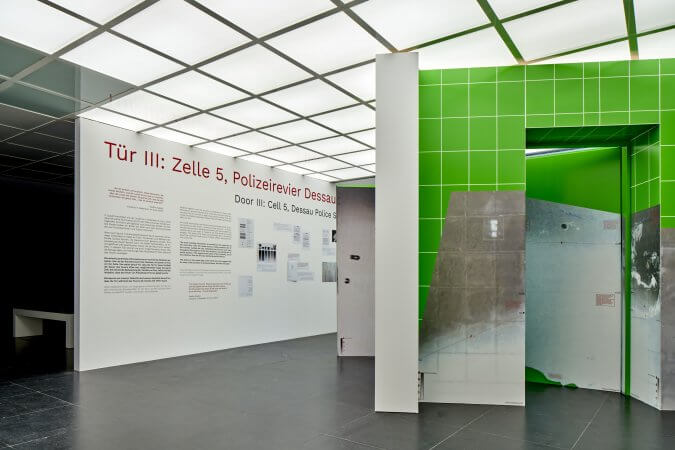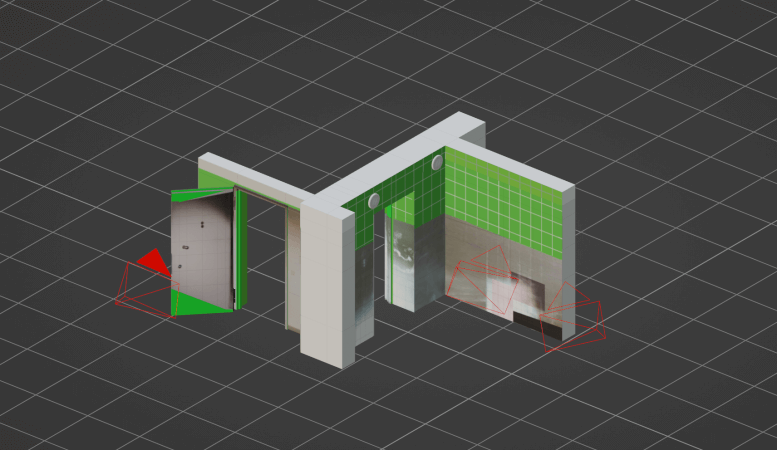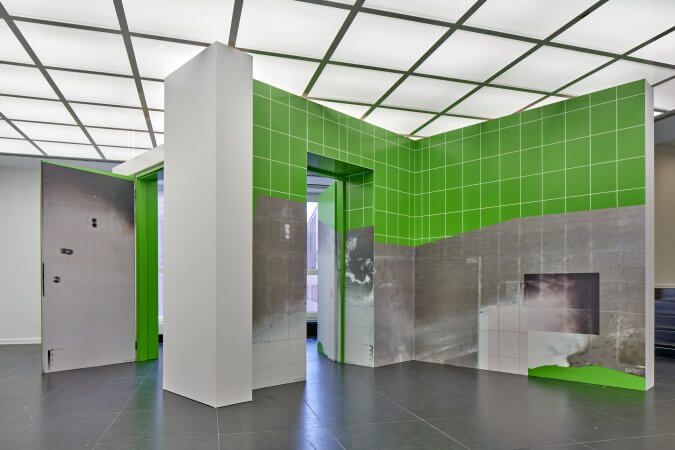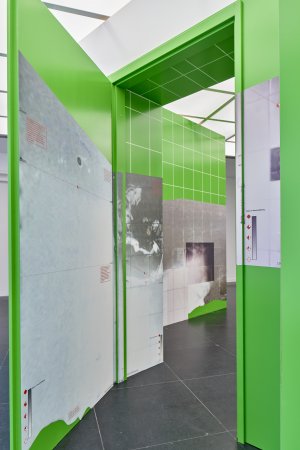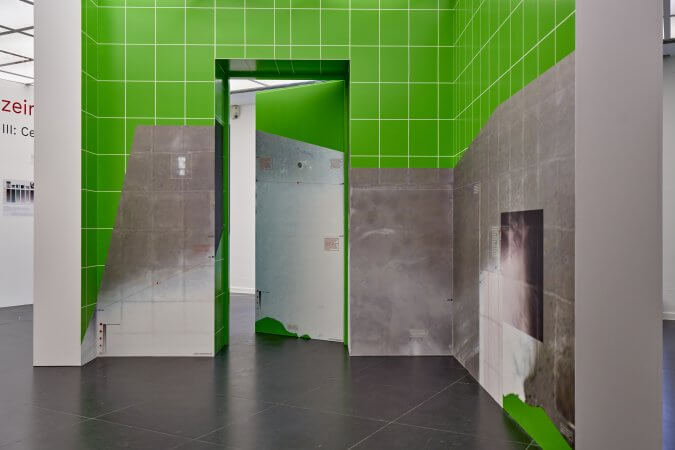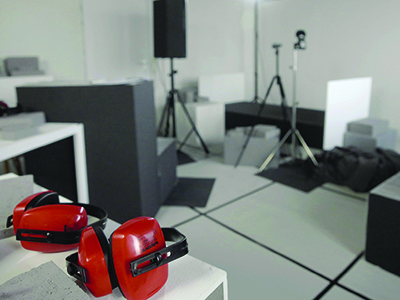Door III – Oury Jalloh’s Cell: Smoke Traces
CELL 5, DESSAU POLICE STATION
Working together with the Initiative in Gedenken an Oury Jalloh, FA/Forensis reconstructed the door of the cell, and part of the surrounding corridor, as both a digital and physical model. Onto this model, we digitally projected images of the cell taken by the police after the fire.
As smoke accumulates and moves around enclosed spaces, it leaves continuous dark marks – known as smoke horizons – on doors, doorframes and walls. Reading these traces can help us determine whether doors were open or closed at the time smoke was being emitted. The state of the doors can potentially tell us something about the movement and actions of police officers during the period of the fire.
The most revealing information is inscribed on the inside face of the cell’s door. Here the smoke horizon closely matches that of the corridor outside the cell, indicating that the door was open throughout the majority of the fire’s duration, and possibly for its entire duration. This supports the claims of Oury’s family, and of the Initiative, that the fire was started by police officers.
The stains on the inside edge of the cell’s door also suggest that for most of the duration of smoke emission, the door was open.
These findings build upon the research previously conducted by forensic fire investigator Dr Iain Peck and the artist Mario Pfeifer, and further supports their original findings.
Forensic Architecture, London & Forensis, Berlin / Initiative in Gedenken an Oury Jalloh
Principal investigator: Eyal Weizman
Research: Martyna Marciniak, Robert Trafford, Dimitra Andritsou, Ashkan Cheheltan
Translation: Fabian Wolff
Our thanks to: Dr. Iain Peck, Mario Pfeiffer, Dr. Alfredo Walker, Dr. Alison Galloway
This investigation was produced with the support of Frankfurter Kunstverein

